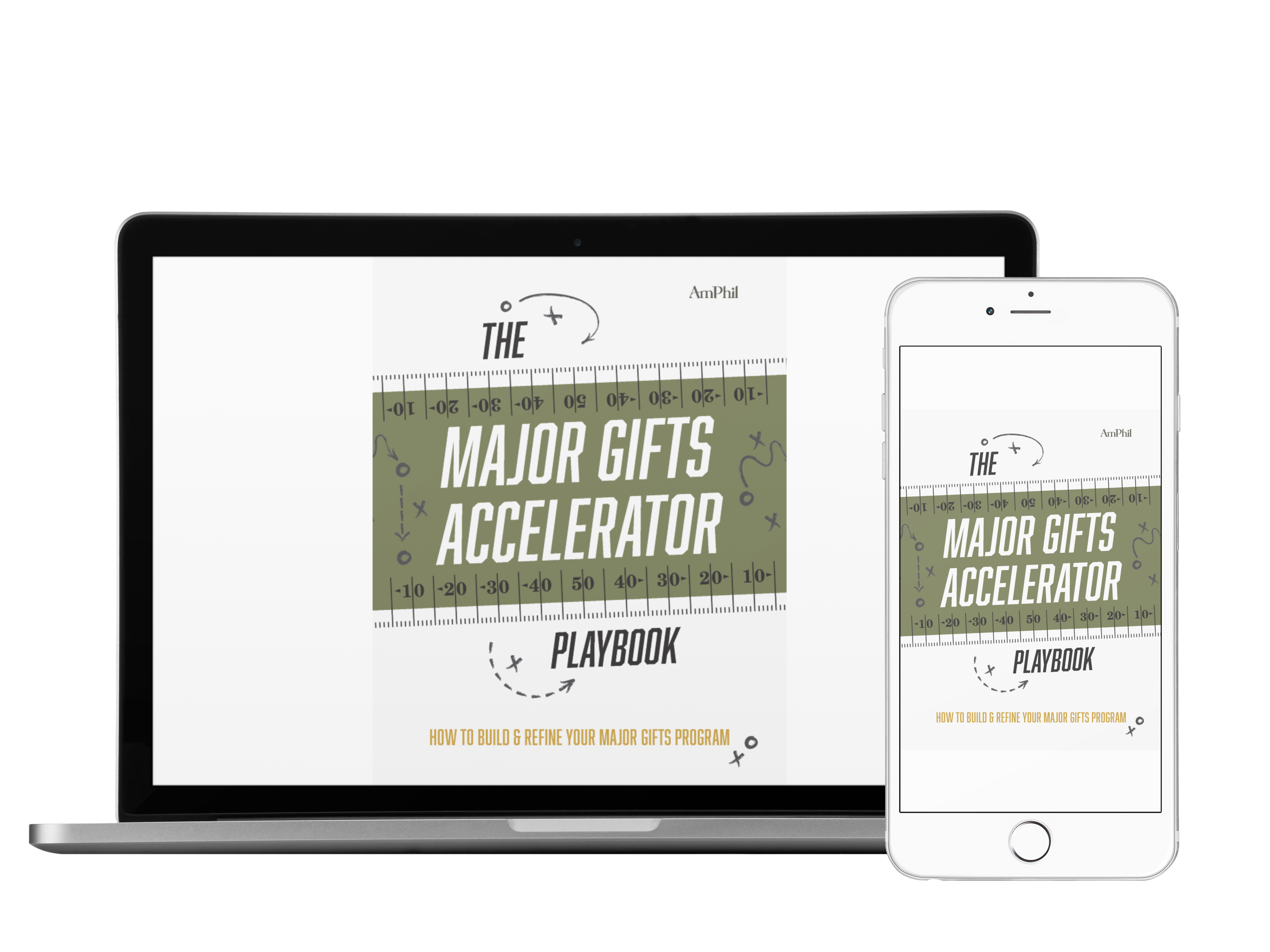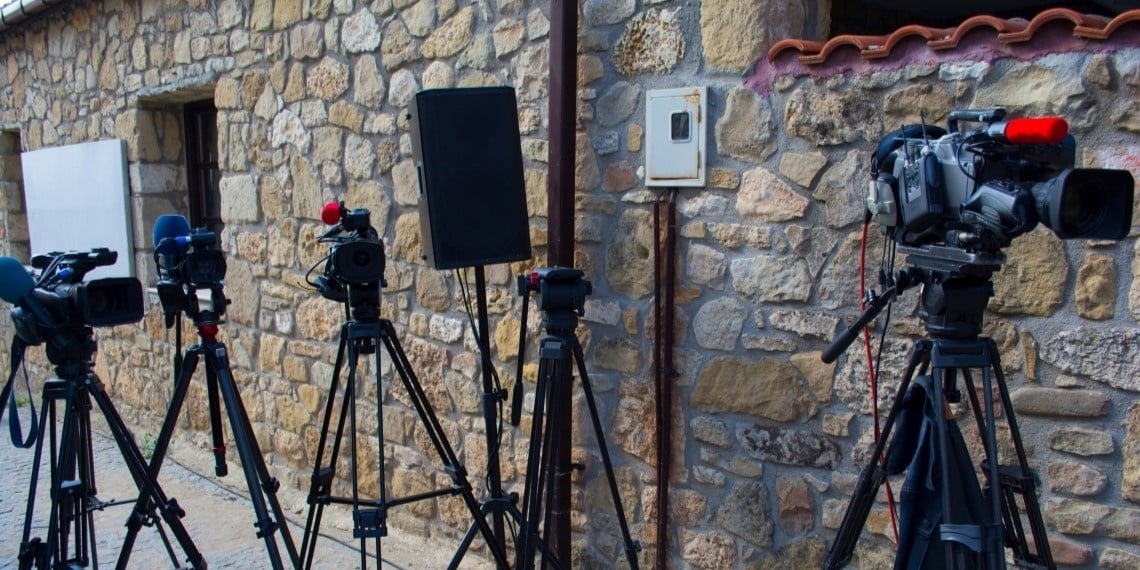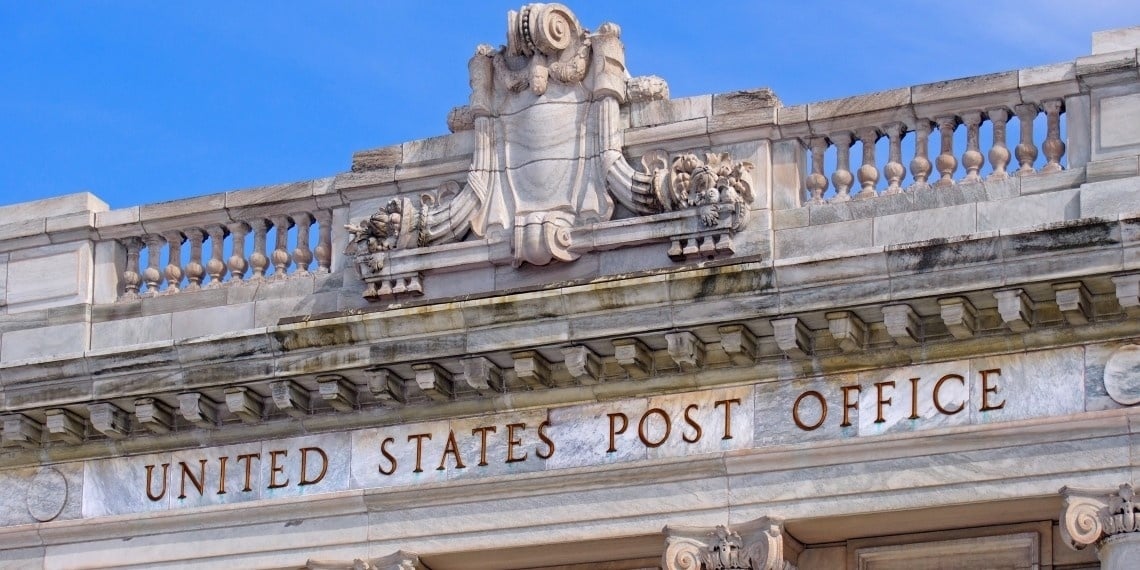
A major gifts program can transform your organization empowering you to fulfill your mission greater than ever before. This major gift program guide is based on decades of nonprofit fundraising experience to help you understand how to categorize a major gift, what returns you may expect, and how to successfully launch your own major gifts program.
What is a Major Gift?
The presence of a well-run major gifts program has a profoundly positive impact on the success of a nonprofit's mission and vision. While there isn't a universal definition of what constitutes a major gift, a common threshold is a donation of $5,000 or more. Some nonprofits consider any donation above $1,000 as a major gift. In general, it follows the 80/20 rule: 80% of your revenue will likely come from 20% of your donors. Note that this measurement should also be used as a reliable indicator to determine if your organization is flush with large donations or could stand to grow your donor database through donor acquisition.
These significant contributions are a game-changer for your bottom line, allowing you to make a tangible difference in your community.
Ready to Launch a Major Gifts Fundraising Program?
Financially stable and successful nonprofits don't appear miraculously out of the ether—in most cases, their bottom line is significantly bolstered by a strategic major gifts program. When launching a major gifts program, an organization must focus on the four fundraising "C's":
Clear vision.
Your nonprofit's vision should be easily identifiable, and the best way to accomplish this is to repeat it across all your communication—direct mail, online mediums, donor clubs, and more. Illustrate your vision by pulling at the heartstrings of potential donors—it's not desperate, it's a human appeal for the betterment of your world.
Consistent Communication.
Donors are more likely to stay engaged when they feel included. Keep them in the loop through email, social media, and cultivation letters.
Competent Follow-up.
For major donors, a generic thank-you isn't enough. Build relationships through personalized follow-ups, and consider hiring a Major Gifts Officer to manage these special connections.
Champions of Your Mission.
Legacy donors keep the lights on and the mission thriving at your nonprofit. These givers have been around for a long time for a reason, and are perfect candidates to provide testimonials that will bolster your organization's reputation or leverage relationships.
Major Gifts Program Checklist
The following attributes are central to success for any organization seeking to move its fundraising to the next level. Does your organization have:
- The ability to raise money either by offering a product or service or, best of all, doing good work and having an existing donor base to support your efforts?
- The strongly held belief that donors are partners in their mission, beyond being simple funding sources? Do you have a donor-centered culture?
- A robust desire to nurture, retain, and engage with donors?
- An understanding of the time cost of consistently raising funds, and/or launching a major gift campaign?
- Are there any champions of your mission with relationships or influence who may be interested in helping you develop your major gift donor database?
- Leadership that understands, supports, and understands the value of this initiative? Do they understand that while potentially transformational, major gifts take time to cultivate and are rarely rewarded in a few short months?
- A well-organized donor database or donor CRM? Spreadsheets are a starting point, but a donor database is a key component of a major gifts strategy.
If you check most of these boxes, your time to launch and improve your major gifts strategy may be now. If you only checked a couple, it might be time to review your notes and discern the next steps before diving head-first into a major gift fundraising program.
Managing the Budget and Return on Investment (ROI)
“Realistic” is the magic word when setting Key Performance Indicators (KPIs) to help determine Return on Investment (ROI). Below are some pointers to help you determine if your goals are ambitious but still within reach.
1. Give it time:
Don’t compare a new major gifts program to one that has been in place for years. Time and concerted effort is needed for proper development.
2. Experience matters:
Factor in your Major Gifts Officer’s experience level when setting goals and expectations. If your MGO has years of work under their belt, you may aim a bit higher when goal setting. On the other hand, if your MGO doesn't have much experience, you may want to keep your goals a little lower.
3. Support your team:
Consider the level of management available to your MGO. If an MGO has strong support, the program's results could be exponentially higher than those of an MGO with limited or restricted support.
Building a Strong Major Gifts Program
Here’s how you can set your nonprofit up for success:
Identify Prospects
Conduct prospect research to identify potential major donors with the capacity and inclination to contribute significantly to your cause. Look for individuals or organizations with a history of philanthropy and an interest in your mission.
Build the Foundation
Develop a support case: Create a compelling case for a support document that clearly articulates why your nonprofit deserves major donors' investment. Highlight their contributions' impact, the urgency of the need, and your organization's unique role in addressing the issue.
Personalize the Experience
Today’s donors want a relationship with the organizations they support, not just a transaction. Focus on building connections and showing appreciation.
“Organizations embracing this change are climbing a mountain of success while others, forcing their own models onto their donors, are fighting in the foothills." (Fundraising Analytics by Joshua M. Birkholz)
Donors now expect relationships, not just transactions, with their favorite charities. That is why forward‐thinking nonprofits are spending more time figuring out how to add personalization to their gift processing.
Turning Planned Giving into Strategic Giving
With trillions of dollars transferring from one generation to another in the next few decades, planned gift-giving is an important part of the ideal major gifts program. Having a planned giving program front and center helps secure additional funding and provides clear options for loyal major donors looking to do long-term philanthropic planning.
“Over the next 20 years, an estimated $84.4 trillion will be passed down from the Baby Boomer generation, with around $11.8 trillion potentially benefiting nonprofit organizations. This seismic shift presents a critical opportunity for philanthropy to harness these resources responsibly and effectively.” Vanguard Charitable Giving
Planned giving takes you far beyond the traditional “ask and give” models and, using tax and financial planning tools, helps the donor think creatively about using the assets they control as a critical part of their giving. When incorporating such a program into your fundraising model, there are a few significant points to consider:
- Integrate the functions of planned giving and major giving, eliminating competition in these areas. Treat the donor as one person, not two halves.
- Enhance your planned giving program with asset-based fundraising and have a strategic gift design program in place.
- Understand that donors' wealth can be impacted unexpectedly by fraud, scammers, identity theft, government regulations, and much more.
Organize Your Website So That it’s Easy to Give Non-Cash Major Gifts.
Many major gift officers miss the fact that not all success comes from one-on-one outreach. When an MGO begins to bring their organization's name in front of major giving prospects, those prospects will do their research. This is where your social media and website come in.
A key focus of your major giving program should be non-cash gifts like stocks or real estate. These gifts are much larger than cash since more than 97% of wealth is held in non-cash assets. Organizations that accept any non-cash gifts see 50% growth in fundraising revenue over the next five years compared to 11% growth in those accepting only cash donations.
If your organization accepts gifts of stock, Qualified Charitable Distributions (gifts from an IRA), or Donor Advised Funds, ensure you have an easy, accessible way for donors to make these gifts directly on your website. Online giving — even for major gifts like these — is surging, and donors will be headed straight to your site looking for smarter ways to give. Here’s how you can set your organization up for success:
- Create giving pages for any non-cash giving options. Use a form on these pages to collect donor information before revealing how to actually make the gift (e.g., broker transfer instructions, and DTC information for stock gifts).
- Place links to these pages on your primary donate page.
- Use website banners to promote major giving options during key months, like November and December.
- Thank donors who make a gift and follow up with any donors who filled out your form, but didn’t complete their gifts.
Strengthening Donor Relationships
Strong relationships are at the heart of successful major gifts programs. Here are five ways to build those relationships:
1. Have a private face-to-face meeting (virtually or in-person)
This is a must. You cannot discuss a major gift in a group setting. This can be at the beginning of your cultivation or toward the end, but you cannot get around it. More than one person can attend a face-to-face meeting — usually a board member and the executive director or development director. The meeting can take place at the prospect’s home or office and last anywhere from 15 minutes to an hour.
2. Invite them to see your program in action.
Persuade each of your prospects to take a tour, visit a program, or attend an event. Choose something you think will have the greatest impact on that individual.
3. Engage your prospects to volunteer.
Invite your prospects to volunteer. On a committee, in the office, in direct service, one-time or ongoing. Volunteering brings people closer to your organization and makes them more inclined to give.
4. Provide regular updates and check-ins.
Updates about your programs and services can be delivered by phone, email, direct mail, or in person. You should also check in to find out how your donors are doing during these difficult times. Updates and check-ins should be sent twice a year to all prospects on your top 20 list.
5. Follow-up matters
Handwritten note cards, swag to remind them of your organization, invites to events, and sharing relevant articles that may interest them are great ways to build trust and brand affinity with your organization.
Don’t Forget Foundations
While individuals may often seem like an easier lift, do not forget to keep mission-aligned foundations on your radar. To do this, you should make sure that organizational fundraisers are part of the major gifts team. They should not be isolated from the individual MGOs or managed by a different department. They should be an integral part of the major gifts team.
Avoid the notion that you must get stuffy and intellectual in talking to foundation representatives. They will indeed require more processes, proof of outcomes, budgets, stats, and other numbers and facts. But don’t get away from the core fact that you, through your organization, are changing lives, the culture, and/or the environment, which is the important aspect of your work together. This also means that your communication, in addition to the business and process requirements, should also have emotional content. You need to find that common ground of shared values, passions, and interests, and then talk about those shared interests and values using stories to make your point.
- Find and connect to the decision‐maker in the organization. This may require matching up your CEO or program head with that person.
- Prepare a proposal that shows how their interests and values match your program objectives. Be sure to meet their proposal, documentation, and due diligence requirements.
- In the proposal, be sure to include how their giving will change lives and how thes will be met.
While fundraising from organizations can be complex, the process really boils down to these simple points. Meeting the organization's funding requirements and successfully matching values and objectives will lead to success.
Major Gift Program Summary
Have we unlocked all the secrets for a successful major gift program? Definitely not! The hope, though, is that you will be able to take a few of these highlights, key points, and resources that will put your organization on the path to more major gifts than you have had in the past and maybe, if the timing is right, land that transformational gift.
- Donor Identification: Identifying potential major donors involves researching individuals or organizations with the capacity and inclination to make significant financial contributions.
- Cultivation: It is essential to cultivate relationships with potential major donors. This involves regular communication, personalized interactions, and engaging them in the organization's mission and activities.
- Relationship Building: Building strong, meaningful relationships with major donors goes beyond fundraising. It involves understanding their philanthropic interests, values, and motivations, and aligning them with the nonprofit's mission.
- Stewardship: Effective stewardship involves expressing gratitude, keeping donors informed about the impact of their gifts, and ensuring transparency in how their contributions are used.
- Ask Strategy: Developing a strategic approach to making the ask is crucial. This includes appropriately timing the ask, tailoring the request to the donor's interests and capacity, and clearly articulating their gift's impact on the organization's mission.
- Recognition: Publicly and privately acknowledging major donors reinforces their importance to the organization and encourages continued support. Recognition can take various forms, including naming opportunities, donor events, and publication acknowledgment.
- Follow-up and Reporting: After receiving a major gift, it's important to follow up with donors and update them on how their contribution is making a difference. Reporting on the impact of their gift helps maintain trust and fosters long-term relationships.
Starting or enhancing your major gifts program can truly transform your nonprofit. With the right strategy, relationships, and resources in place, you can unlock major contributions that will take your organization to new heights.



